System Shock (2023 PC) Review
A polished re-telling of an old hacker story
In 1994, Looking Glass Studios released a first-person action-adventure game on PC that would lead to spiritual successors such as Bioshock and Prey. This game, System Shock, blended cyberpunk elements with exploration and shooting combat to create a memorable experience for gamers at the end of the 20th century. Now, in 2023, a studio named Nightdive Studios has brought a Kickstarter-funded remake to PC, but does this faithful re-imagining hack it? Keep reading as I, a newbie to the franchise, offer my bytes on the game, with only a minimal number of hacker and computer puns.
System Shock places players on a space station orbiting Saturn in the year 2072. The unnamed protagonist has recently been injected with mind amps allowing for advanced hacking and other electronic tasks, under the condition that they remove the ethical programs that govern the station’s AI, SHODAN. However, this backfires, as SHODAN begins taking over the systems of the station and ridding it of the organic residents, whether through a mutative virus or by altering them into mindless cyborgs. The hero must navigate the various levels of the station, avoiding or fighting enemies and performing various tasks to thwart and shut down SHODAN.
Navigation of the various decks in System Shock should feel pretty standard to FPS players. The environments present a sort of lived-in space station atmosphere with a touch of a cyberpunk feel. Many of the corridors are dimly lit, with certain areas marked by neon signs and symbols. I noticed that, even at full 4K resolution, the textures still show some pixelation, almost as if this is a high-definition pixel art title. I have to imagine that this is the developers’ way of keeping the levels somewhat true to the original game, but I can’t help but wonder how these different areas would have looked if more advanced features of the Unreal Engine had been utilized.
Sometimes you can play hacker electrician to progress through doors and gates
Overall, I still found the levels intriguing enough that I would go wandering off into random hallways and rooms. A 2D map system updates in real time as you uncover new locations, doors, and items of interest. As you explore more, the map becomes invaluable, as each area is built almost like a maze. I found myself getting lost several times looking for a specific room that had been locked earlier. With as large as the map is, a locked door and keypad markers would have simplified the map and cut down on the amount of time I wandered aimlessly. Also, I noticed on several occasions that all markers disappeared from the map entirely, which affected me the most severely when I needed to find an elevator. The level design feels intentional in its size and lack of detailed information, driving the player to explore and remember more than is usually expected in a more modern game of this same type.
I enjoyed the specific level of interactivity with the environment. I felt like I could click on even the smallest thing and pick it up or work with it to accomplish a goal. In certain areas, junction boxes provide a puzzle mechanic with electric plugs that are fun to cross and plug to open secret doors. Some of the areas can only be navigated via a trip into cyberspace, in which the player becomes more of a first-person cyber drone that attacks other programs and triggers switches in the real world. The levels have various lifts and platforms to use to advance to different heights and areas. System Shock has plenty to find and play with, and I’d much rather have a dense, smaller game to play in than an open world with nothing to do.
Combat is hip-fire focused, employing various ammo types and throwables
Just like the level navigation, the combat operates much like an FPS from the 1990s would. All weapons are hip-fired, and I never felt as if they were inaccurate while firing in this way. Weapon types ranged from traditional bullet ammo and specialty shots to purely electrical weapons that draw energy from a status bar on the HUD. On average, the ammo economy seemed to be somewhat generous, but the difficulty of some enemies meant that the player’s ammo reserves would dwindle fairly quickly. Many times I found myself trying to decide what weapon I could feasibly use to take down a combatant that would not cost me too much health or energy. Luckily, every level has several recharge stations for my energy bar, allowing me to swap to an energy weapon to save ammo elsewhere. When all else failed, I had access to several melee weapons to swing against smaller enemies.
System Shock offers a simple economy for purchasing consumables and weapon upgrades, and I was impressed with the unique nature of how the player earns money. Though the occasional coin can be found by looting bodies and exploring rooms, the majority of the money I earned came from recycling items. Every level has one or two recycle stations where the player can drop random items they find into it. Once the player places enough items of value within it, the station will process these items and pay out coin amounts based on item type and quantity. Also, many robotic enemies would drop small heaps of scrap that can be placed in these stations for a generous payout. Though the presence of vending machines talking out loud to you reminds me a lot of my time in the Bioshock franchise, having to earn money by recycling items was a unique touch that I admired, even though I relied more on the scrap piles from enemies rather than the random objects I could pocket.
Even simple maintenance droids can prove dangerous
The enemies faced showed variety and creativity, ranging from aggressive bots to humanoid cyborgs to mutated creatures. One-on-one, the combat felt balanced, thanks to being able to aim at weak points and use the level design as an advantage. However, I experienced some frustration when the game would dump enemies at me in groups, especially when I knew I was running low on ammo. Sometimes the pacing of these events would speed up quite dramatically, and I would be caught off guard. I respect the difficulty spike, but sometimes I felt the game expected me to be more well-equipped than I actually was. Perhaps this was due to my lack of finding more ammo or weapons elsewhere, but I still never felt quite ready for these encounters. Also, sometimes I would be returning through a hallway or room I had previously cleared, only to find it repopulated with a new group of enemies. I could never tell if this was to shock the player or if this was some sort of mechanic I was missing. I planned routes through cleared areas only to be met with more enemies than I had originally dealt with, sometimes resulting in my death. The randomness of these encounters sometimes bordered on inconvenience rather than challenge.
I feel where this game really struggles is in its narrative. Besides a cutscene in the beginning, much of the story is told in audio logs and random communications with the player. You don’t really see much of anything story-related happening, as the game focuses more on subtly guiding the player from task to task. I never really noticed an objective list, even. The game expects the player to figure out what needs to happen in order to succeed. I don’t put this at the feet of Nightdive Studios, though. System Shock is a product of its time, where games rarely held one’s hand. The narrative component was not as prevalent in the past as it is now, and that shows in this remake. The game’s story did not do much to keep me intrigued past that general curiosity of seeing what was around the next corner.
In conclusion, I found System Shock to be a titillating look into gaming during the ‘90s with a fresh coat of paint and small modern-game upgrades. This title can certainly be nostalgic fun for fans of the original franchise but for players that did not experience this game in the past, it may be hard to hold this up to current titles. System Shock serves as a showcase of how gaming used to be, when internet guides, in-depth tutorials, and narrative markers were non-existent, or at the least not prevalent. The average player can take this game in one of two ways: either as a pleasant experience of an older (I hesitate to say “retro” but we are almost there aren’t we?) gaming experience, or as a more difficult playthrough that teaches by doing instead of showing. If you are interested in where certain games got their inspiration from, then System Shock is a sort of polished re-enactment of the past.
SCORES
GAMEPLAY - 7.5/10
VISUALS - 7/10
SOUND - 6.5/10
CONTROLS - 7/10
REPLAY VALUE - 6.5/10
OVERALL - 6.9/10
System Shock is available now on PC platforms, with planned console releases coming down the line. You can pick it up on Steam, Epic Games, and Gog.com. This review was played on a Steam advance copy provided by the developer, and all screenshots and footage taken are directly from the reviewer.
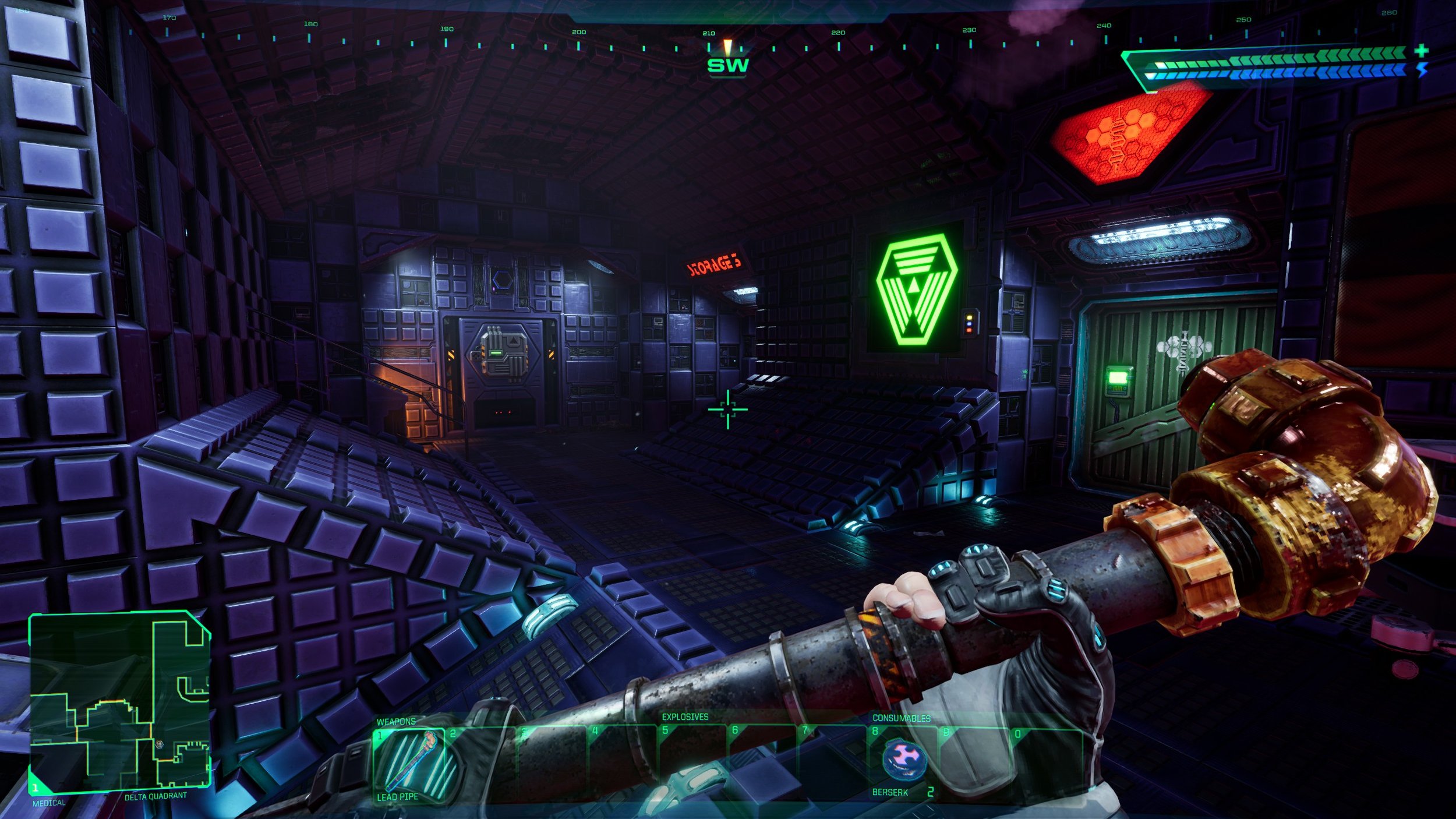
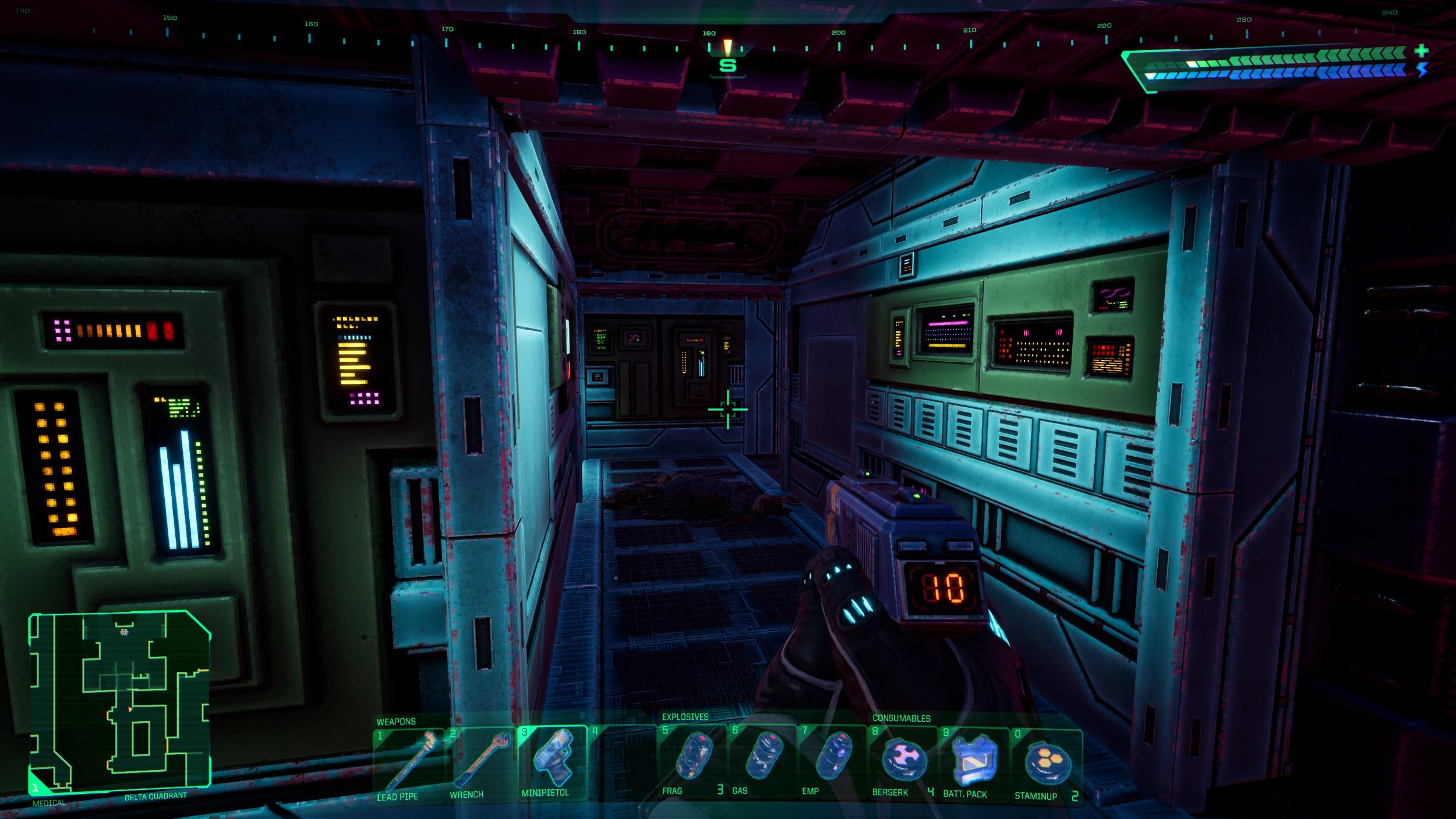
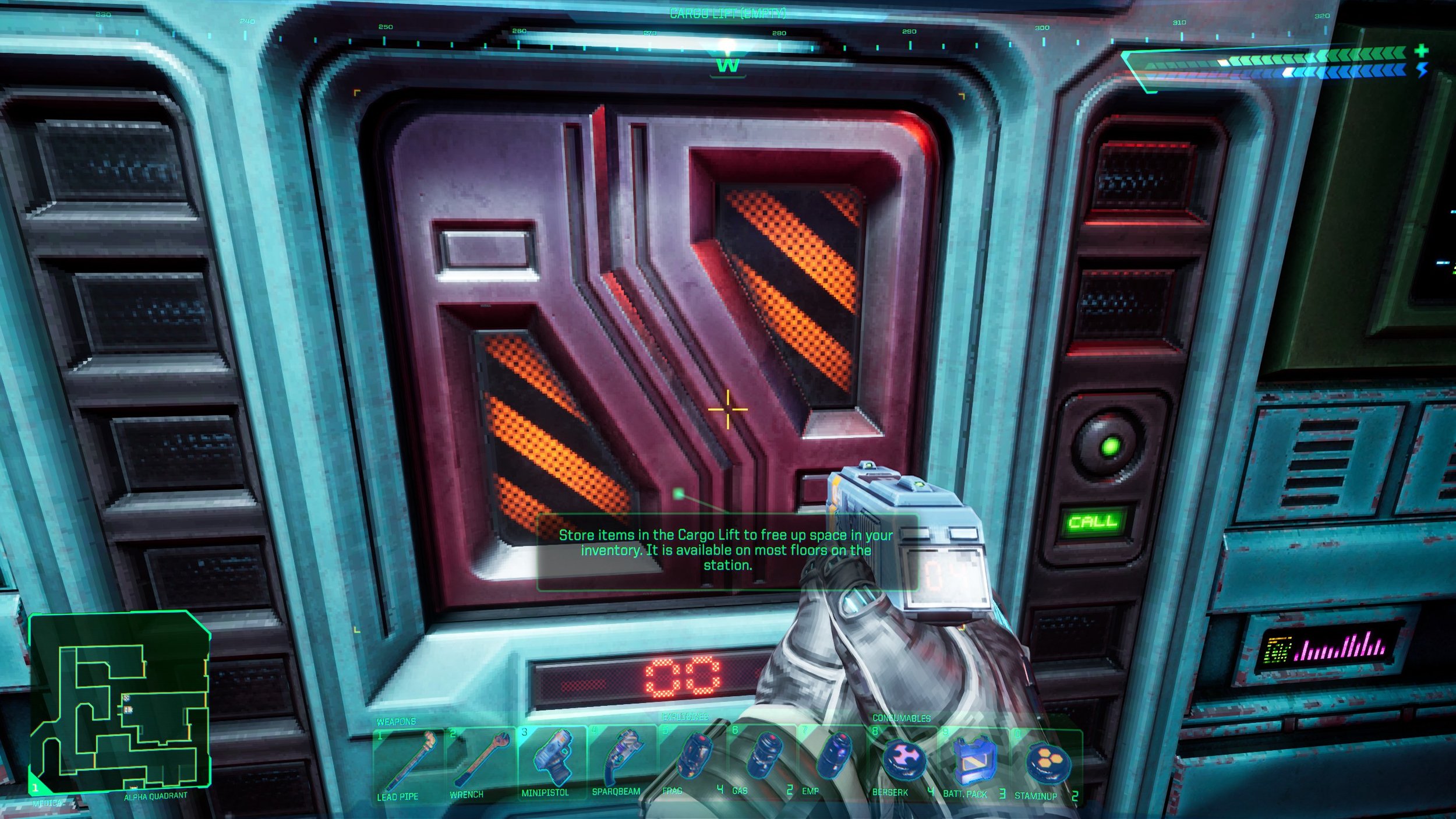

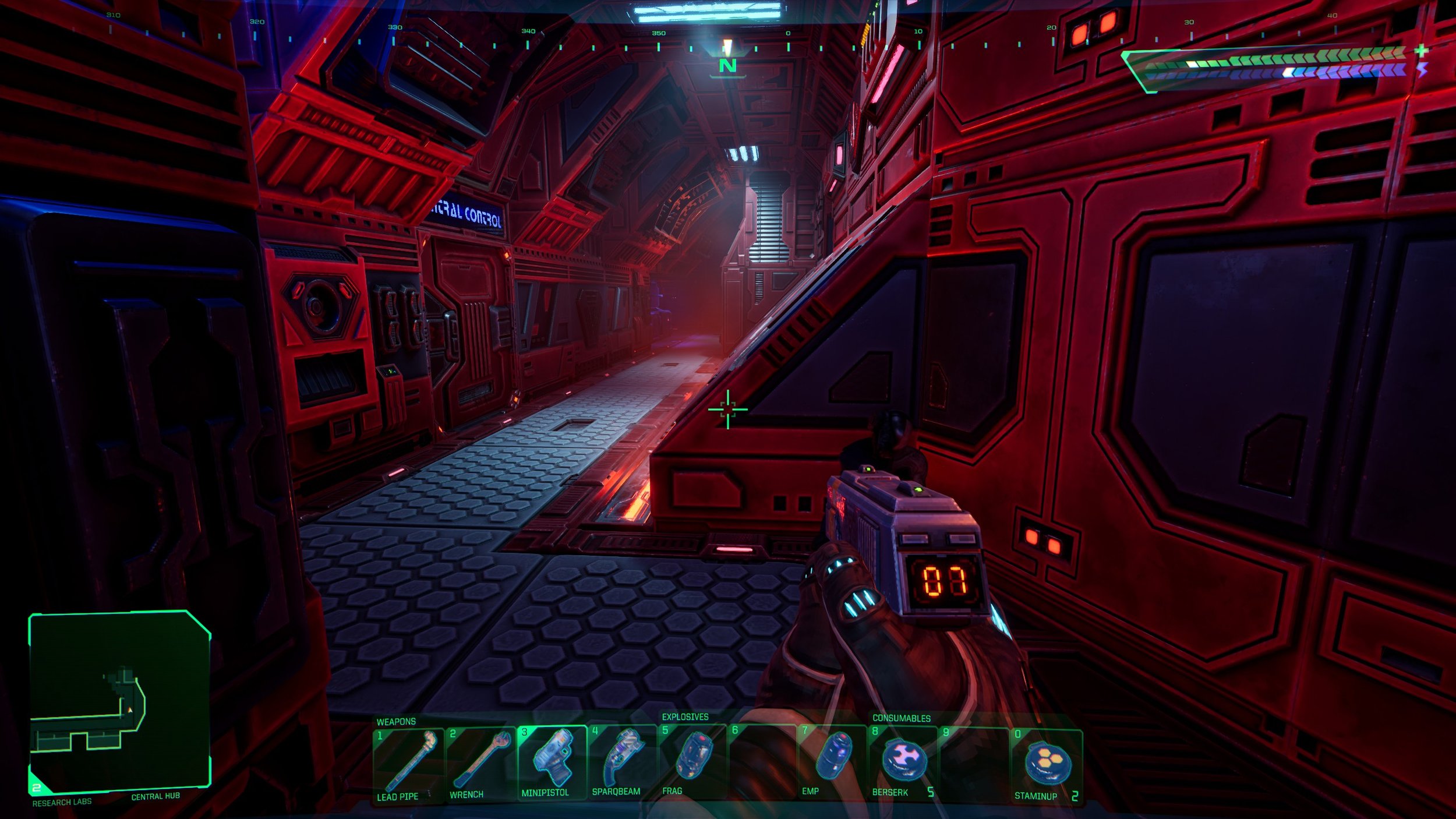


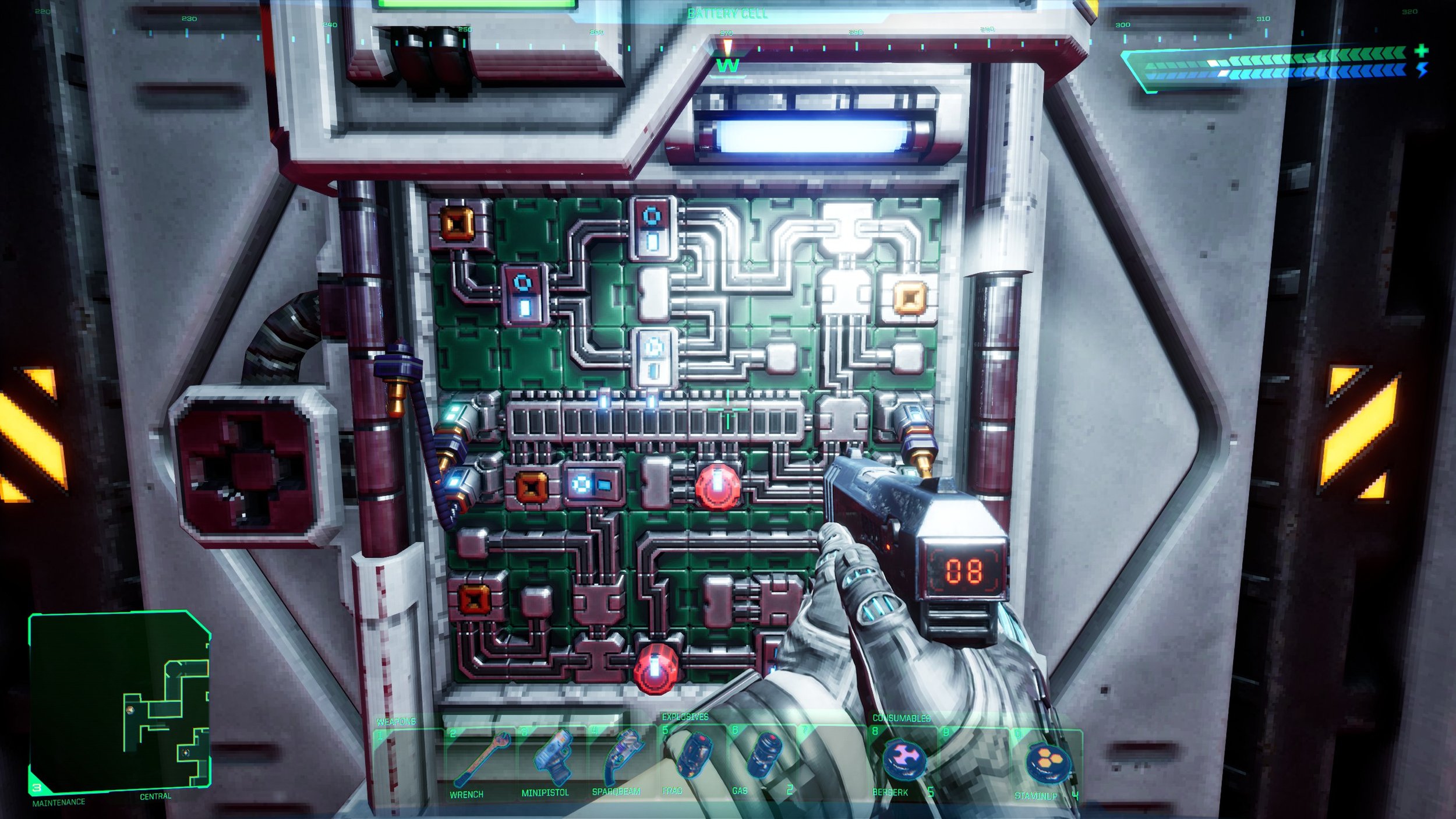
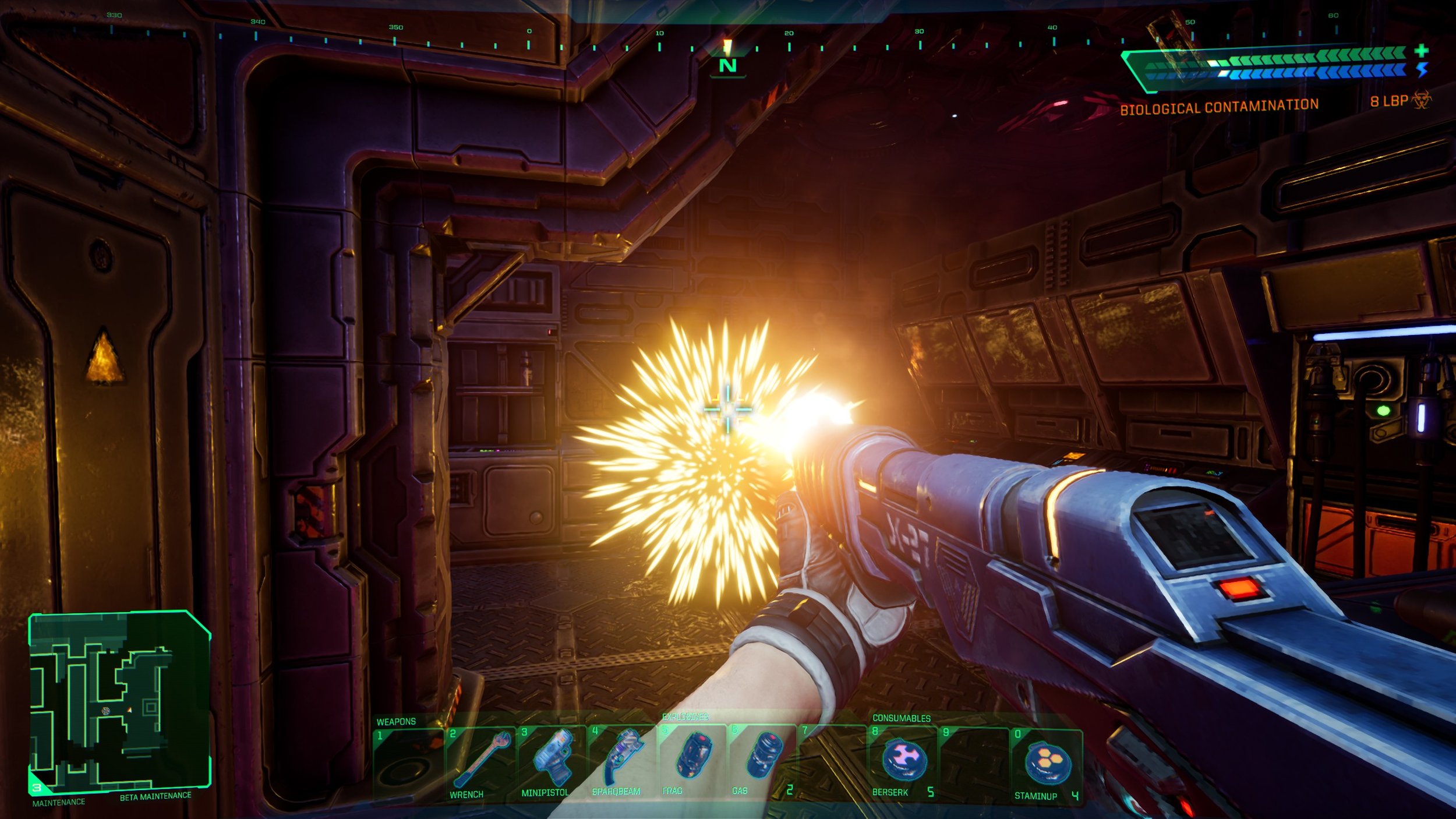
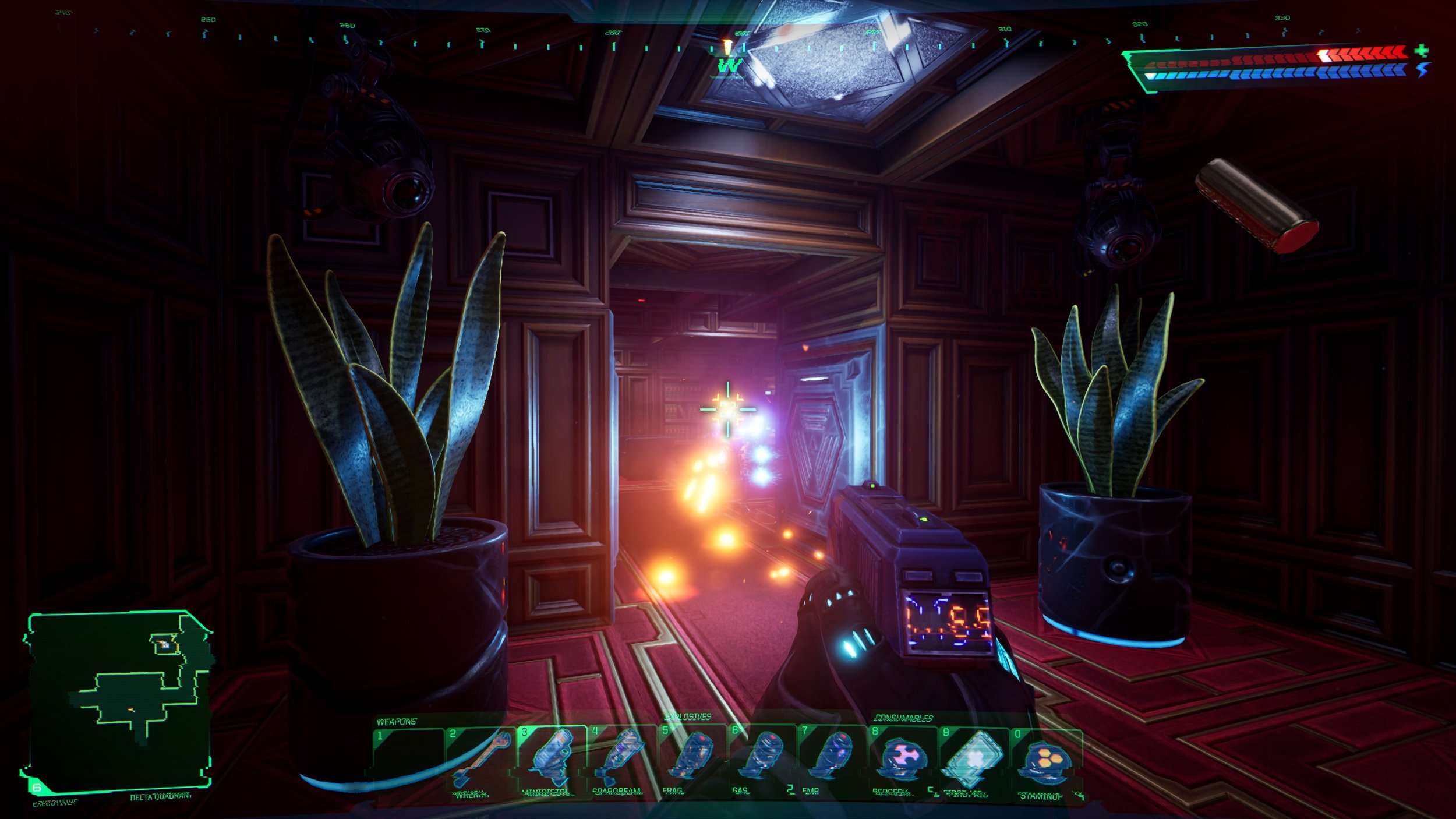
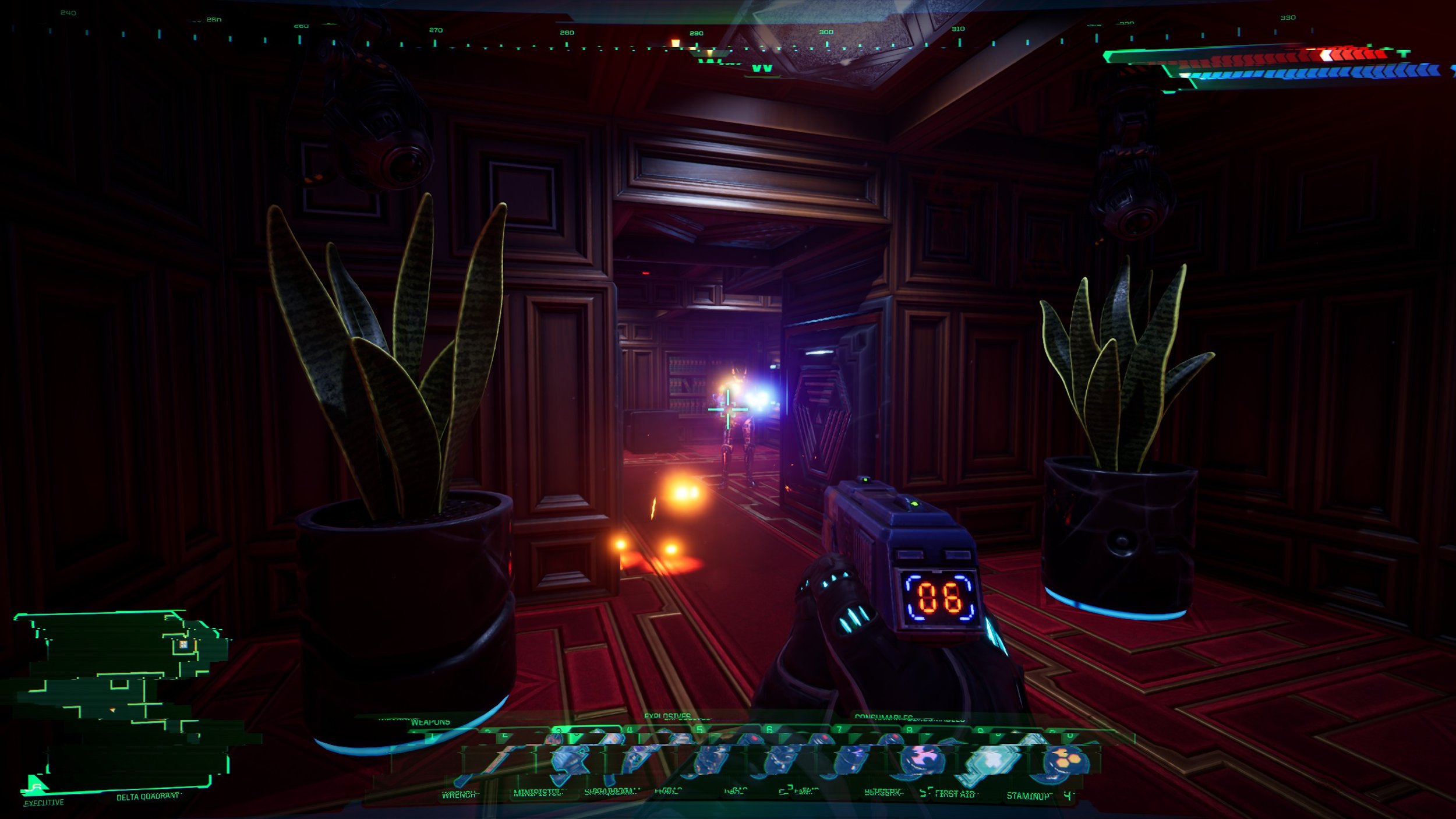
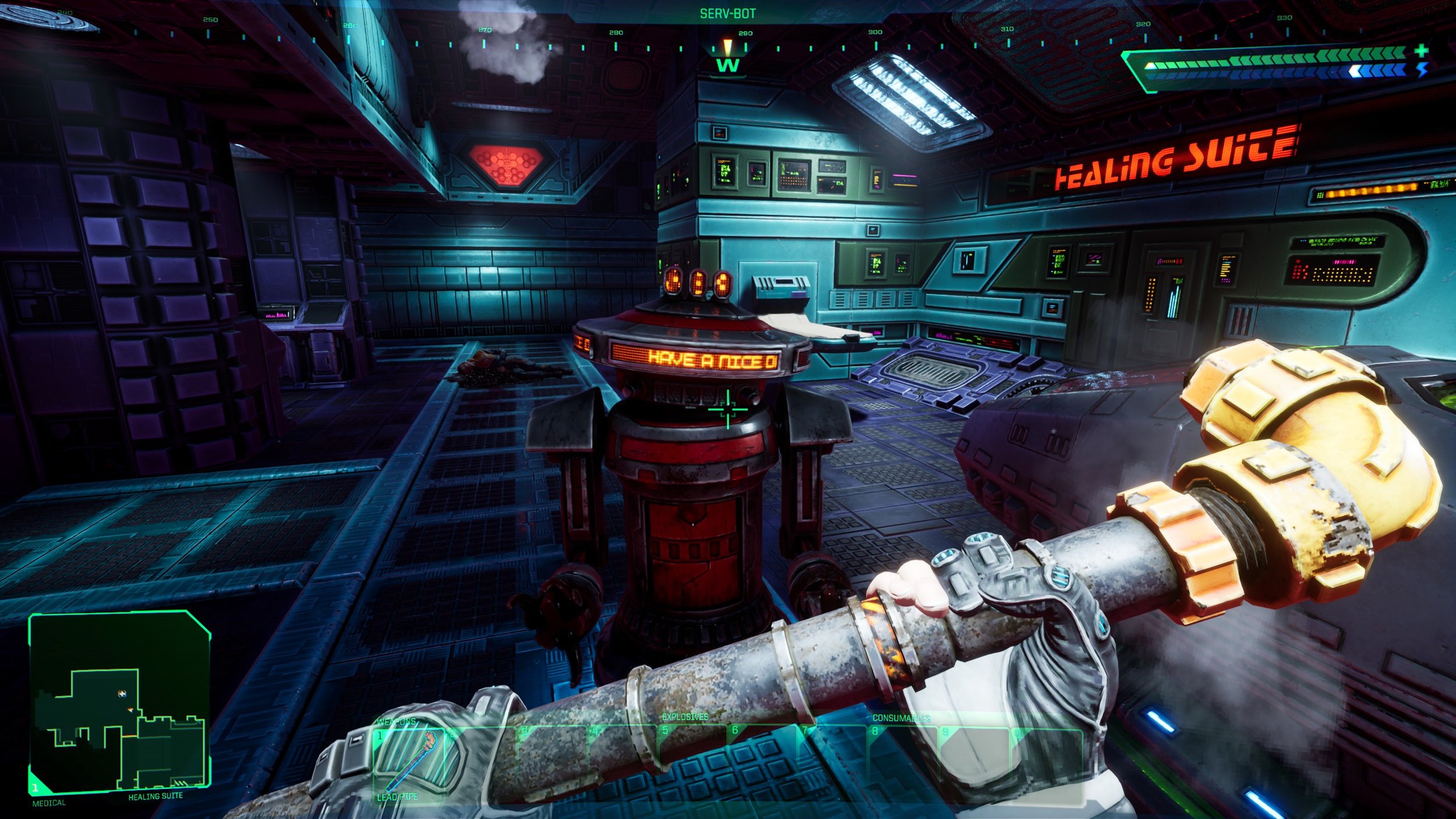


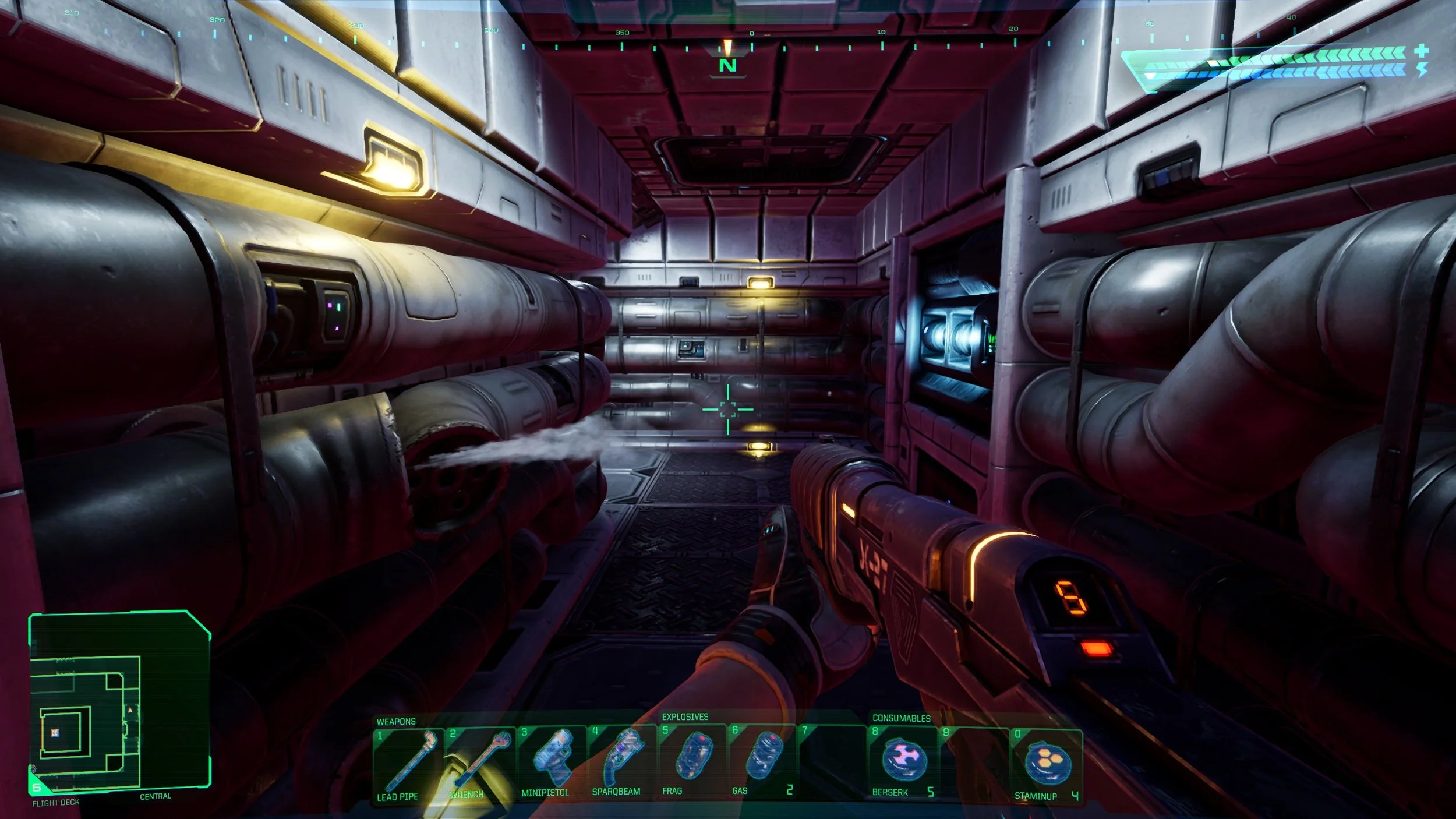






On a path that will ultimately result in his own destruction, James Savage takes on his vampiric ex-girlfriend Draculae in El Paso Elsewhere, a moody neo-noir action shooter from Strange Scaffold.